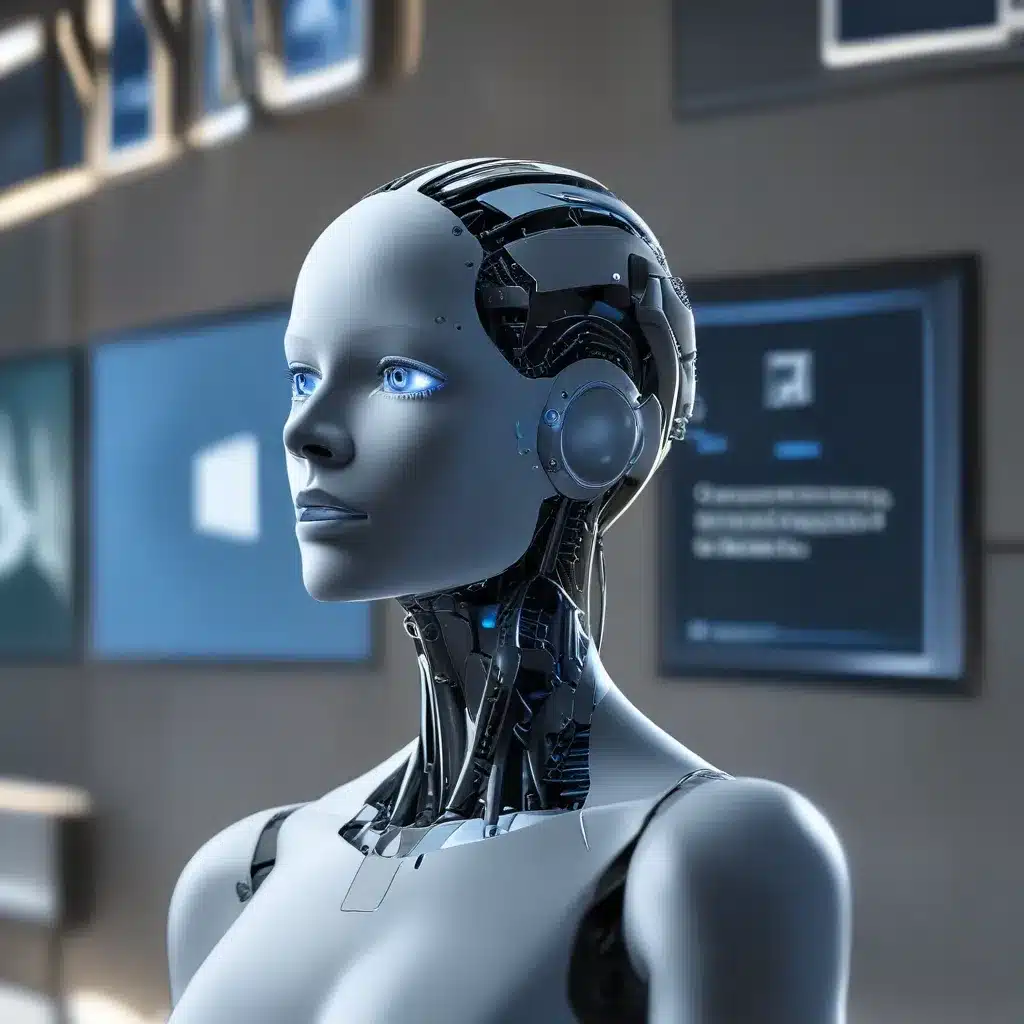The Windows 11 AI Awakening
As I sat down in front of my new Windows 11 laptop, I couldn’t help but feel a sense of anticipation. This wasn’t just another operating system upgrade – it was a technological leap into the future. Windows 11 had been touted as a game-changer, with a host of AI-powered features that promised to transform the way I interacted with my computer.
Microsoft’s partnership with Etihad Airways had already showcased the power of AI in streamlining business operations. Now, it was my turn to see how this cutting-edge technology could enhance my everyday computing experience.
I started by exploring the AI-driven features in Windows 11, eager to uncover their hidden potential. From the moment I fired up the machine, I could sense a newfound intelligence permeating the entire system. The start menu, taskbar, and even the settings menu had been imbued with a level of intuitiveness that left me pleasantly surprised.
Intelligent Assistance at Your Fingertips
One of the standout features was the integration of Microsoft’s virtual assistant, Cortana, into the core of the operating system. With a simple voice command, I could summon Cortana to help me with a wide range of tasks – from setting reminders and scheduling appointments to conducting web searches and even controlling my smart home devices.
But Cortana’s capabilities went far beyond the typical virtual assistant. Powered by Azure OpenAI and Azure Integration Services, the AI-powered assistant could understand the context and nuance of my requests, providing tailored responses and solutions that left me feeling like I had a personal concierge at my beck and call.
Streamlining Workflows with AI
As I delved deeper into the Windows 11 experience, I discovered that AI had permeated every aspect of the operating system. The new file explorer, for instance, utilized machine learning algorithms to anticipate my needs and surface the most relevant files and folders with lightning-fast speed.
The integration of Microsoft Dynamics 365 and Ramco Global Payroll showcased how AI could revolutionize HR and finance operations, and I couldn’t help but imagine how these same principles could be applied to my own productivity workflows.
With a few clicks, I was able to set up custom task templates that leveraged AI to automate mundane, repetitive tasks. No more wasting time on manual data entry or tedious file organization – the operating system took care of it all, freeing me up to focus on the more meaningful aspects of my work.
The Power of Predictive Analytics
But the real game-changer, in my opinion, was the way Windows 11 harnessed the power of predictive analytics to anticipate my needs and preferences. The operating system seemed to have an uncanny ability to know what I was going to do before I even did it.
As I browsed the web, the built-in browser would suggest relevant articles and resources, tailored to my interests and browsing history. When I sat down to work on a project, the OS would automatically pull up the files and applications I needed, streamlining my workflow and saving me valuable time.
Even something as simple as my desktop wallpaper seemed to have a mind of its own, dynamically adapting to my mood and the time of day. It was as if the operating system had developed a deep understanding of my preferences and habits, and was using that knowledge to enhance my overall computing experience.
The Future of Computing is Intelligent
ItFix, the IT services company I use, had been raving about the potential of Windows 11’s AI capabilities, and now I could see why. The operating system had truly transformed the way I interacted with my computer, making me feel like I had a digital partner rather than just a machine.
As I continued to explore the depths of Windows 11’s AI features, I couldn’t help but feel excited about the future of computing. The seamless integration of intelligent technologies into the core of the operating system had the potential to revolutionize the way we work, play, and communicate.
And with the continued advancements in areas like cloud computing, natural language processing, and machine learning, I knew that the AI-powered capabilities of Windows 11 were only the beginning. The future of computing was intelligent, and I couldn’t wait to see what other amazing feats it had in store.
Embracing the AI Revolution
In a world where technology is constantly evolving, it’s easy to feel overwhelmed by the pace of change. But with Windows 11, I found that embracing the AI revolution could actually make my life easier and more efficient.
The operating system’s intelligent features had streamlined my workflows, anticipated my needs, and even added a touch of personality to my computing experience. It was as if the machine had become an extension of my own mind, anticipating my every move and providing a level of support that was both comforting and empowering.
As I continued to explore the depths of Windows 11’s AI capabilities, I couldn’t help but feel a sense of excitement and wonder. This was the future of computing, and I was lucky enough to be a part of it. With the help of ItFix and the cutting-edge technologies powering Windows 11, I knew that the possibilities were truly limitless.
So, if you’re ready to step into the future and experience the transformative power of AI-driven computing, I highly recommend giving Windows 11 a try. It’s a leap into the unknown, but one that just might change the way you think about your relationship with your computer forever.













